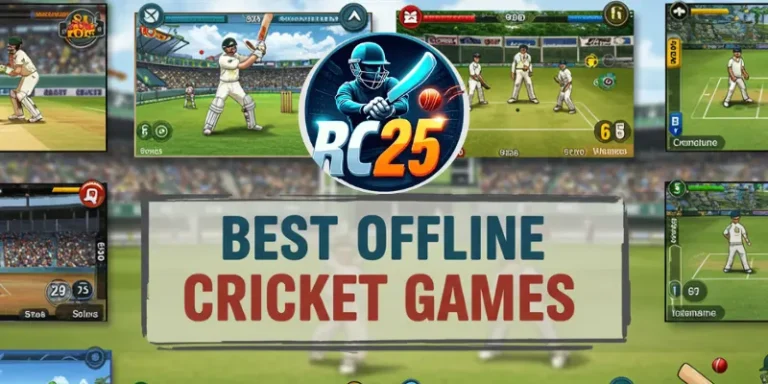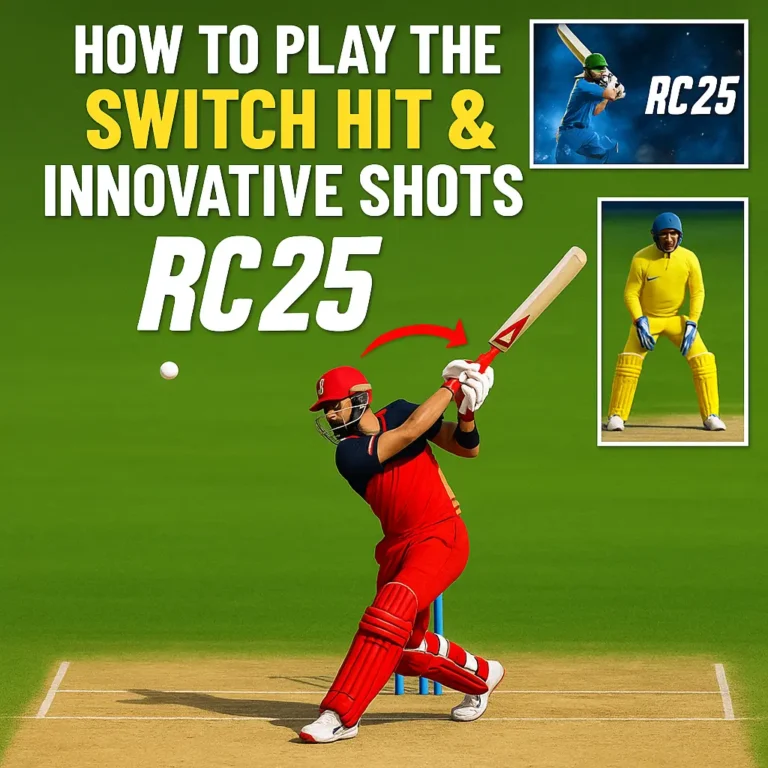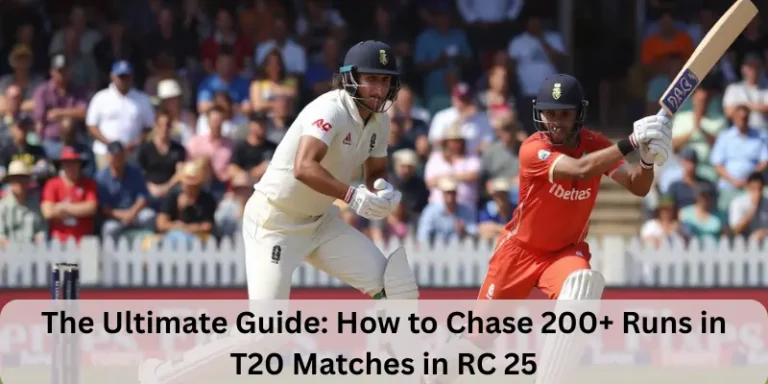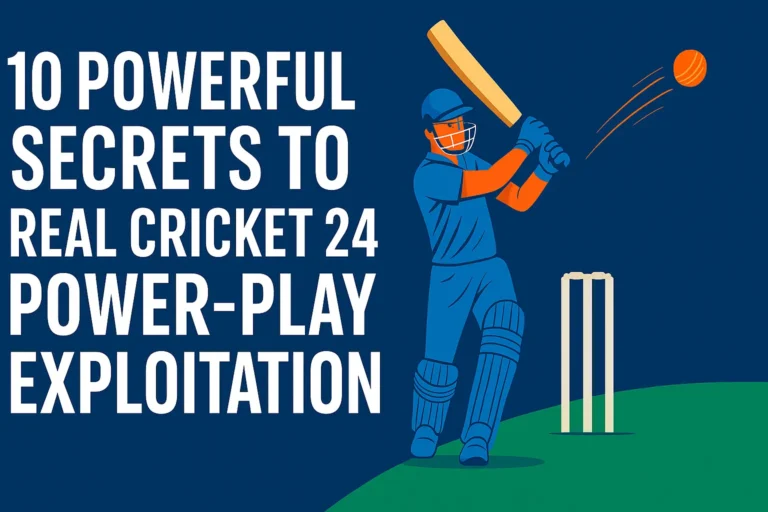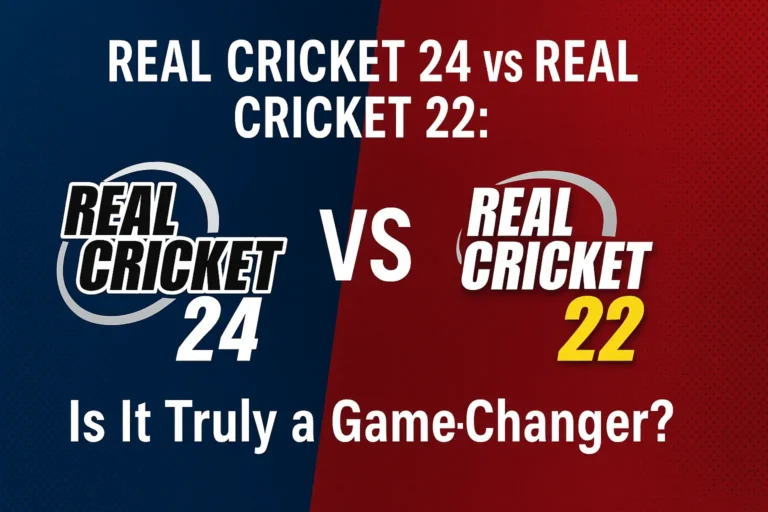Remember that heart-stopping moment? The umpire’s finger slowly raises, signalling you’re out LBW, but deep down, you know that ball was sliding down leg. Or you’re bowling, convinced you heard that tell-tale nick, but the umpire shakes his head. Frustration bubbles up. This is where the Real Cricket 24 Umpire Decision Review System (DRS) transforms from a simple game feature into your strategic lifeline.
It’s your digital shout of “Howzat!” when the on-field umpire might have got it wrong. Think of it as your pocket-sized hawk-eye, ready to challenge fate and potentially swing the momentum of your virtual match.
Forget passive acceptance; mastering DRS is about seizing control and making technology work for you. Let’s dive deep into this game-changing mechanic and turn those close calls into match-winning moments.
How DRS Works in Real Cricket 24
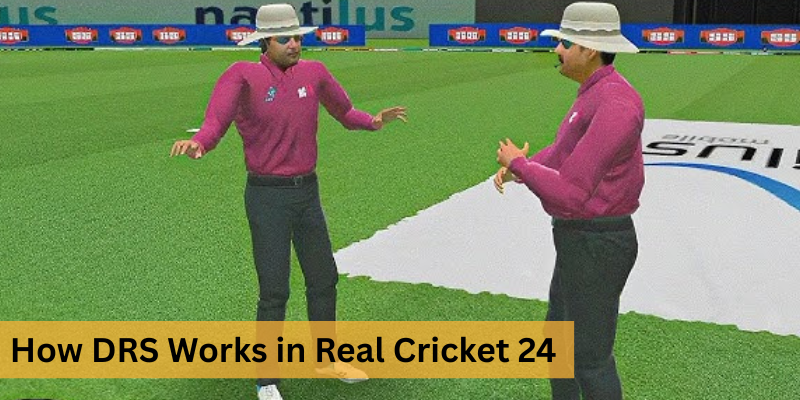
In Real Cricket 24, the Decision Review System (DRS) is more than just a button; it’s a match-defining feature. You get a limited number of reviews per innings, and using them smartly can turn the tide of the game.
At its core, DRS includes ball tracking, edge detection, and umpire’s call simulation. When you request a review, the system replays the incident using hawk-eye technology inspired visuals. The technology is designed to simulate real-life cricket broadcast reviews.
DRS in RC24 is divided into three main aspects:
- Ball Tracking (Technology Simulation)
- Edge Detection (Snickometer Simulation)
- Umpire’s Call (Marginal Decision Rule)
It feels like the real thing especially on realism settings or higher difficulty levels, where precision matters more.
When to Use Your Reviews Wisely
Using your reviews recklessly can cost you. It’s important to understand the match context. Are you chasing a target? Is it a tight Test scenario?
Here’s how to decide:
- Use DRS only when you’re 80% confident the decision will be overturned.
- Don’t review hopeful LBW appeals—understanding ball trajectory predictions matters.
- Save reviews for game-changing wickets.
Knowing the best situations to save your DRS reviews for can be a true game-changer.
Tip: In tournaments, strategic use of DRS in tournaments can be the difference between group stage exits and finals.
LBW Decisions – Ball Tracking & Impact
Leg Before Wicket (LBW) calls rely heavily on ball tracking technology in-game. The system analyzes:
- Pitch Impact (DRS Variable)
- Ball trajectory after hitting the pad
- Stumps projection
How accurate is DRS in RC24? Pretty close to real-life, especially on high difficulty. But remember: if the impact is marginal, umpire’s call comes into play.
You need to calculate:
- Where the ball pitched
- Whether it hit in line
- Was it going to hit the stumps?
Misreading any of these = wasted review.
Edge Detection: Snickometer & UltraEdge
The umpire review system mechanics in RC24 mimic tools like Snickometer and UltraEdge.
These features work by simulating:
- Tiny sound spikes when bat hits ball
- Visual edge representation in slow-mo
If you’re batting and unsure whether you edged the ball, DRS limitations in cricket games mean you need to act quickly. From a bowling perspective, request a review only if:
- The bat was close to the ball
- Keeper or slip saw/heard something
Batting/bowling perspective on reviews plays a big role in success rate.
Reviewing Run-Out & Stumping Calls
While not the primary use, the DRS system allows for reviewing run-out and stumping calls too. This is useful in high-pressure limited-overs games.
However, the margin is razor-thin:
- Use DRS only when you’re sure the foot wasn’t grounded
- Or when glove contact looks uncertain
These scenarios test your understanding of ball trajectory predictions and quick reaction times.
Umpire’s Call – How It Affects Decisions
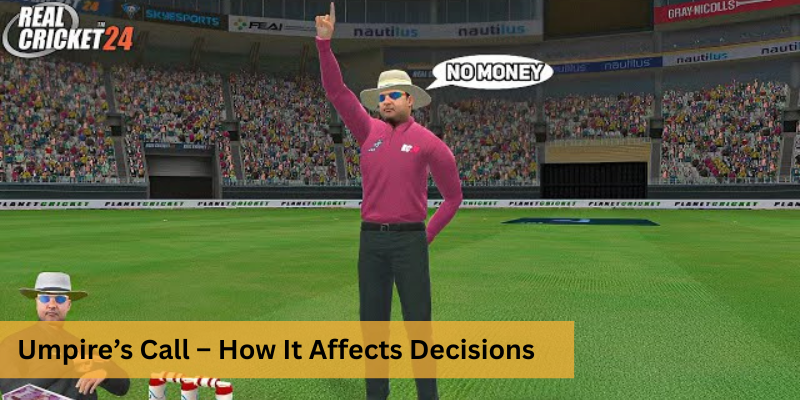
Let’s decode Umpire’s Call in Real Cricket 24. It’s a marginal call that doesn’t overturn the decision if the prediction is too close.
For example:
- Ball hits just clipping the stump? Not out remains not out.
- Impact outside off with no shot offered? You won’t get the benefit.
This makes you wonder, does DRS favor certain play styles? Yes, defensive batters may avoid edge detections while aggressive players risk getting LBW.
Important: Don’t burn your reviews on Umpire’s Call situations unless the match situation demands it.
Strategic Use of DRS in Tournaments
Tournaments are long. Review limitations (strategic resource) become even more vital here.
Here are 5 actionable tips to use DRS smartly in tournaments:
- Keep at least one review for the final 5 overs.
- Don’t challenge every LBW—prioritize wicket-taking moments.
- Use replays before hitting the review button.
- Study pitch behavior—helps predict ball movement.
- Track opponents’ DRS patterns for mind games.
If you’re playing in a tournament league or online event, mastering the DRS limitations in cricket games will elevate your competitive edge.
Common Mistakes Players Make with Reviews: Pitfalls to Avoid
Even seasoned players fall into DRS traps. Recognizing these common mistakes players make with reviews is half the battle to avoiding them:
- The Fury Review: Challenging immediately after a decision because you’re angry or disappointed. Breathe! Assess calmly.
- The Gambler’s Fallacy: “I haven’t used one yet, might as well try!” No. Only review if you have a genuine, logical belief the call was wrong.
- Ignoring Umpire’s Call: Not understanding the risk involved in challenging marginal decisions. If it looks 50-50, it probably is – and you’ll likely lose the review.
- Wasting on Tailenders: Using a crucial review trying to dismiss the number 10 or 11 batsman early in their innings. Often not worth the risk unless it’s blatant.
- Forgetting the Match Situation: Using your last review frivolously when you have plenty of wickets in hand or overs to bowl, leaving you exposed for a critical moment later.
- Misreading the Ball Tracking: Not paying attention to where the ball pitched or the point of impact before focusing on the stumps. A ball pitching outside leg is always not out, regardless of where it hits or is going!
Avoiding these blunders preserves your reviews for the moments that truly decide matches. Successful DRS strategies are built on discipline and clear thinking.
Does DRS Favor Batsmen or Bowlers More?
An often-debated topic: Does DRS favor batsmen or bowlers more?
Let’s break it down:
- Edge Detection helps bowlers when snick isn’t given.
- Umpire’s Call often goes batsman’s way in tight LBW.
- Run-outs and stumpings can be 50/50.
So, it’s safe to say: it depends on the perspective. Many feel DRS favors batsmen slightly more, but bowlers benefit from sharp reviews when used smartly.
Pro Tips to Master the DRS System
You’ve made it this far; now let’s unlock expert-level gameplay with these pro tips to master DRS:
- Always watch the replay before hitting Review.
- Use DRS mostly when your team is on the back foot.
- Study developer insights on review system updates regularly.
- Practice in career mode to test various scenarios.
- Record your own reviews to analyse your decision-making.
What percentage of DRS appeals succeed in RC24? Around 60–70% if used smartly. But on higher difficulty levels, you must sharpen your timing and vision.
Final Thoughts
Mastering the Real Cricket 24 Umpire Decision Review System is about patience, observation, and match awareness. The system is dynamic and simulates real cricket scenarios with incredible depth.
Next time you’re mid-match and tempted to hit that review button pause. Think. Analyze. Then act.
External Resource: ICC’s Guide to DRS in Real-Life Cricket
With every smart review, you’re not just correcting a decision, you’re taking control of the match’s momentum.

